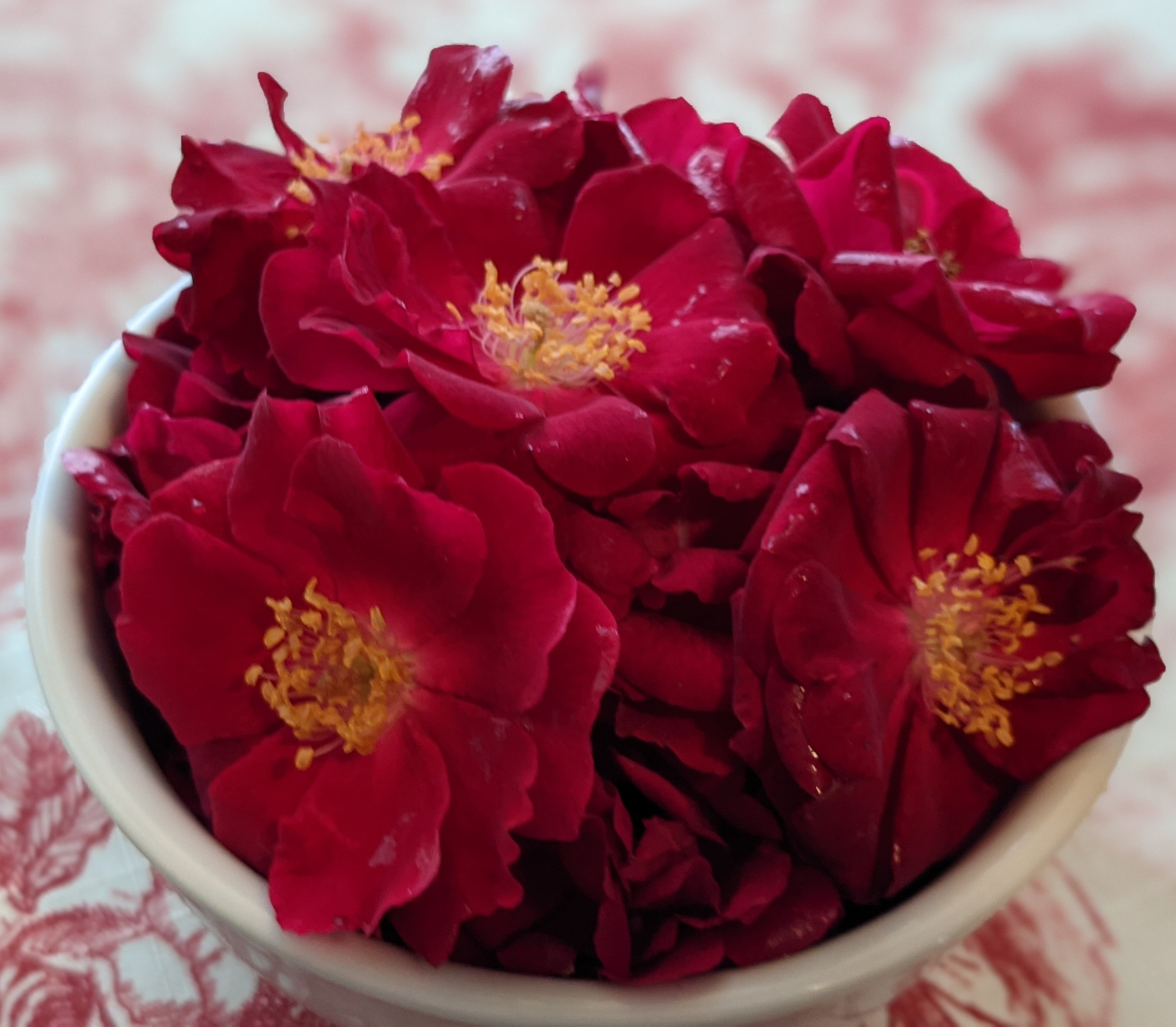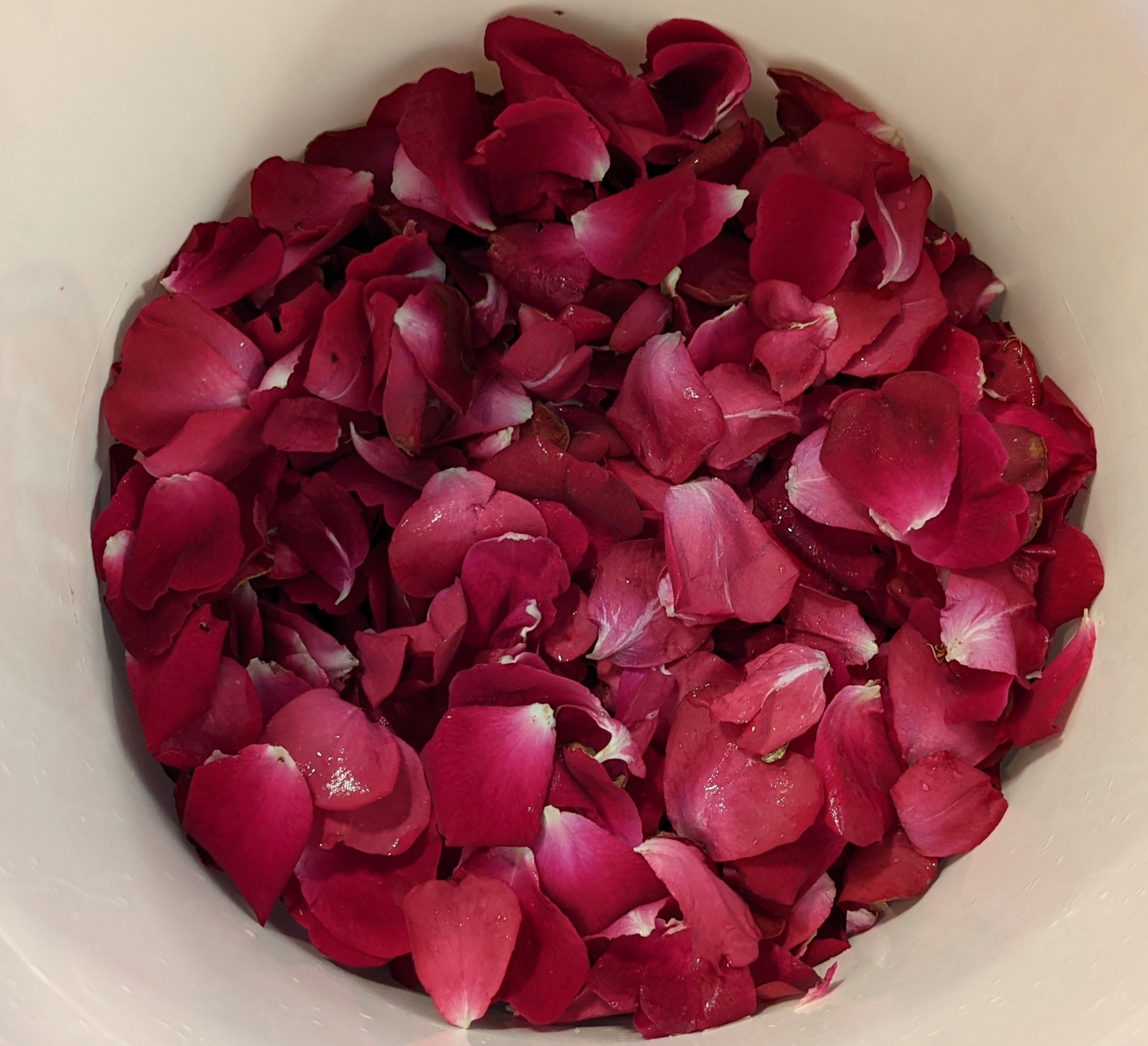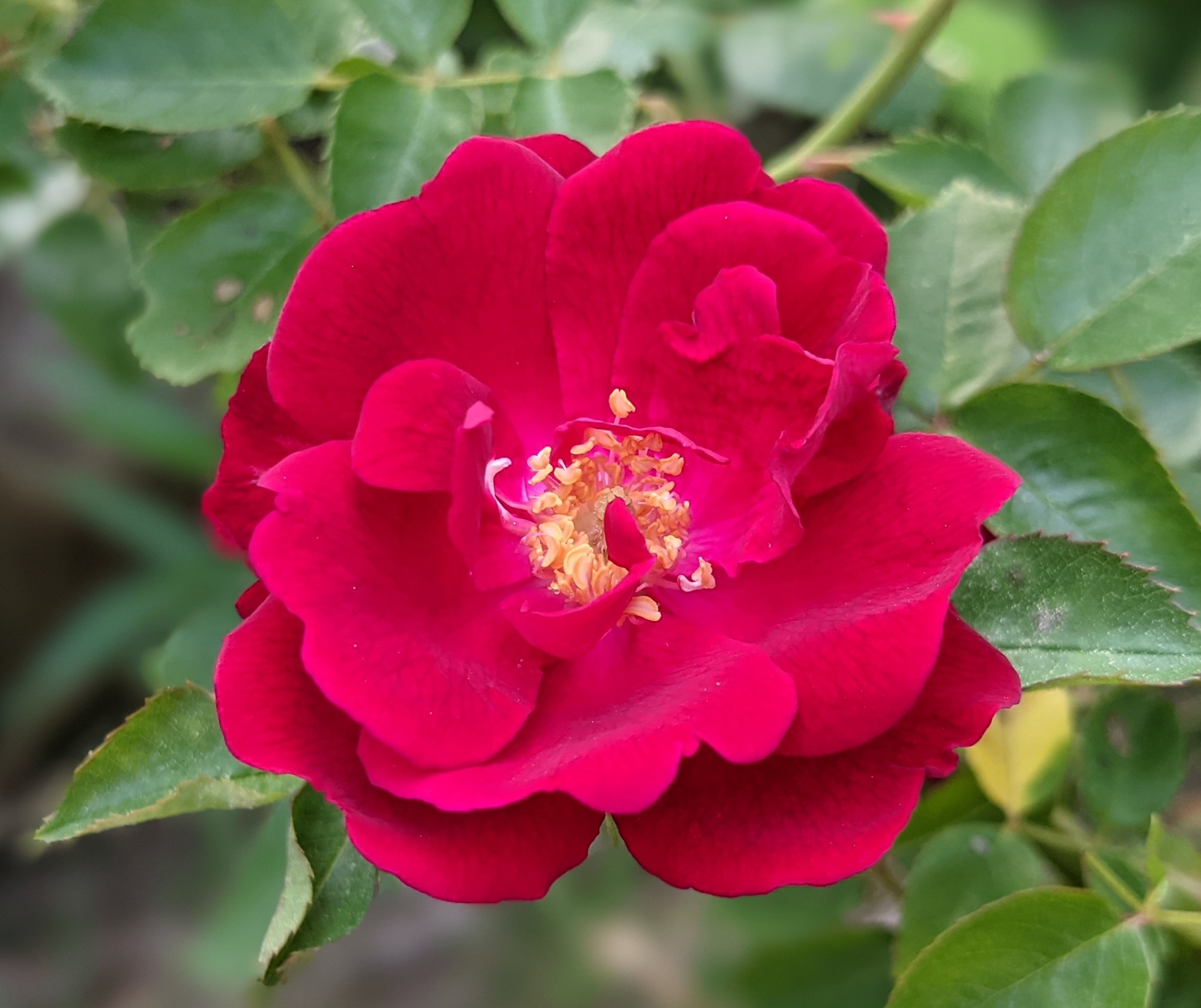
Beautiful red roses grow amok here in an area that clearly hints at having once been a well-tended terraced garden. I choose to let the vegetation grow wild – and have been rewarded with sumac berries, peonies, lemon balm, yucca, and other delightful flora. The roses, as with many of the other flowers here, aren’t just pretty faces – they’re edible. And wouldn’t they make a lovely wine?
The first step in making the wine is to procure the flowers: I harvested roughly 2 quarts of roses, including some that were beginning to wilt, and made sure to leave both buds and blooms for pollinators.
As with many floral wines, I began by making a “tea”: steeping the petals in hot water. After about 24 hours, the color had nearly completely leached out from the petals, leaving them a pale lavender shade.
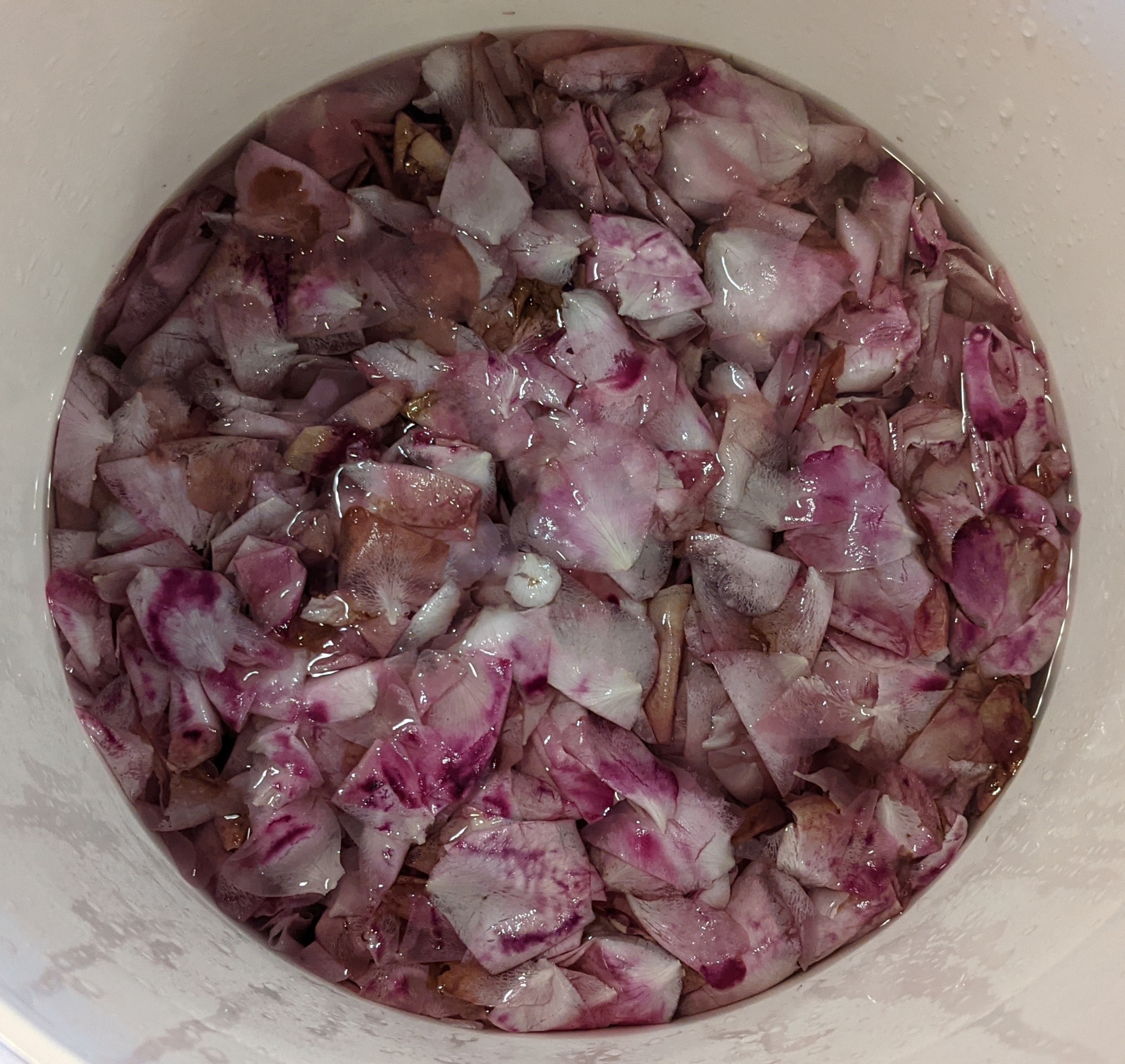
I then strained the petals out of the liquid and poured it back into a fermenting bucket, adding the sugar, apple juice, and other winemaking ingredients (acid, tannin, yeast nutrient). Since the must was already cool, I was able to pitch the yeast, too.
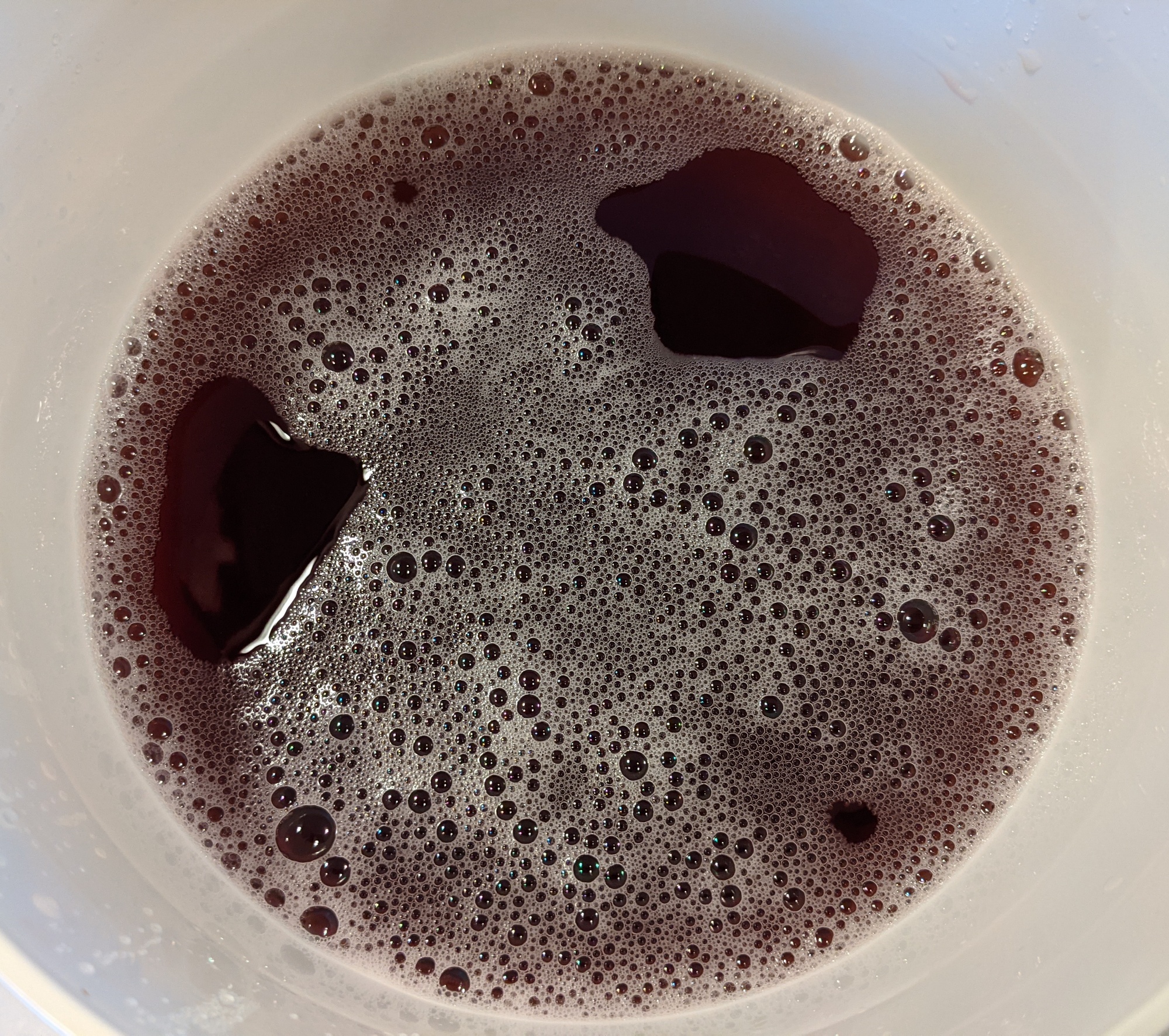
The must fermented for 4 days, then I moved it to a secondary fermentor. The color is vibrant, and the liquid still retains a hint of rose fragrance. As I’d expect, it’s still cloudy at this stage, but it should clear in a couple of weeks.
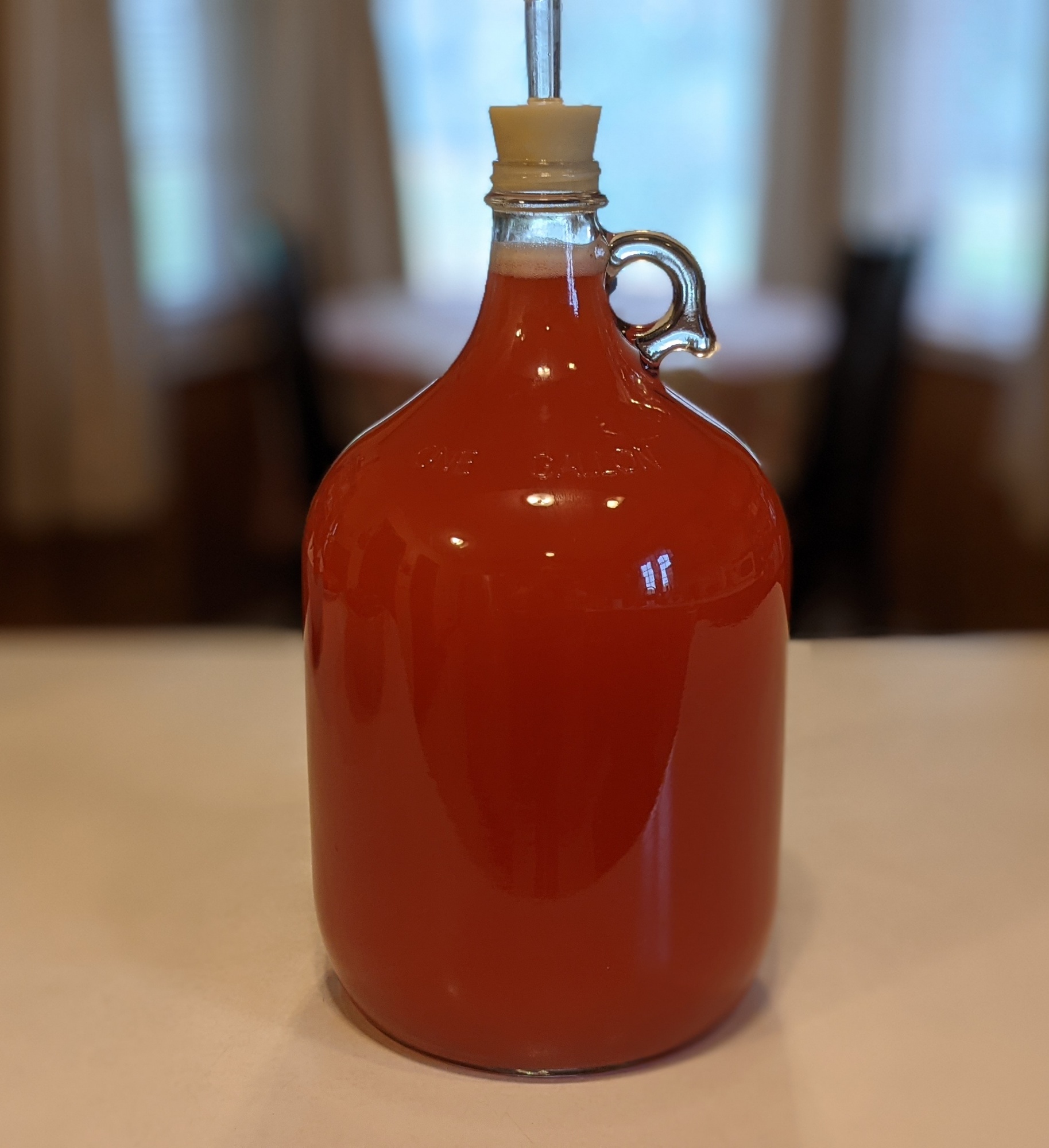
In the not-too-distant future, I’m looking forward to enjoying a glass of wine that will remind me of those stunning crimson roses.

